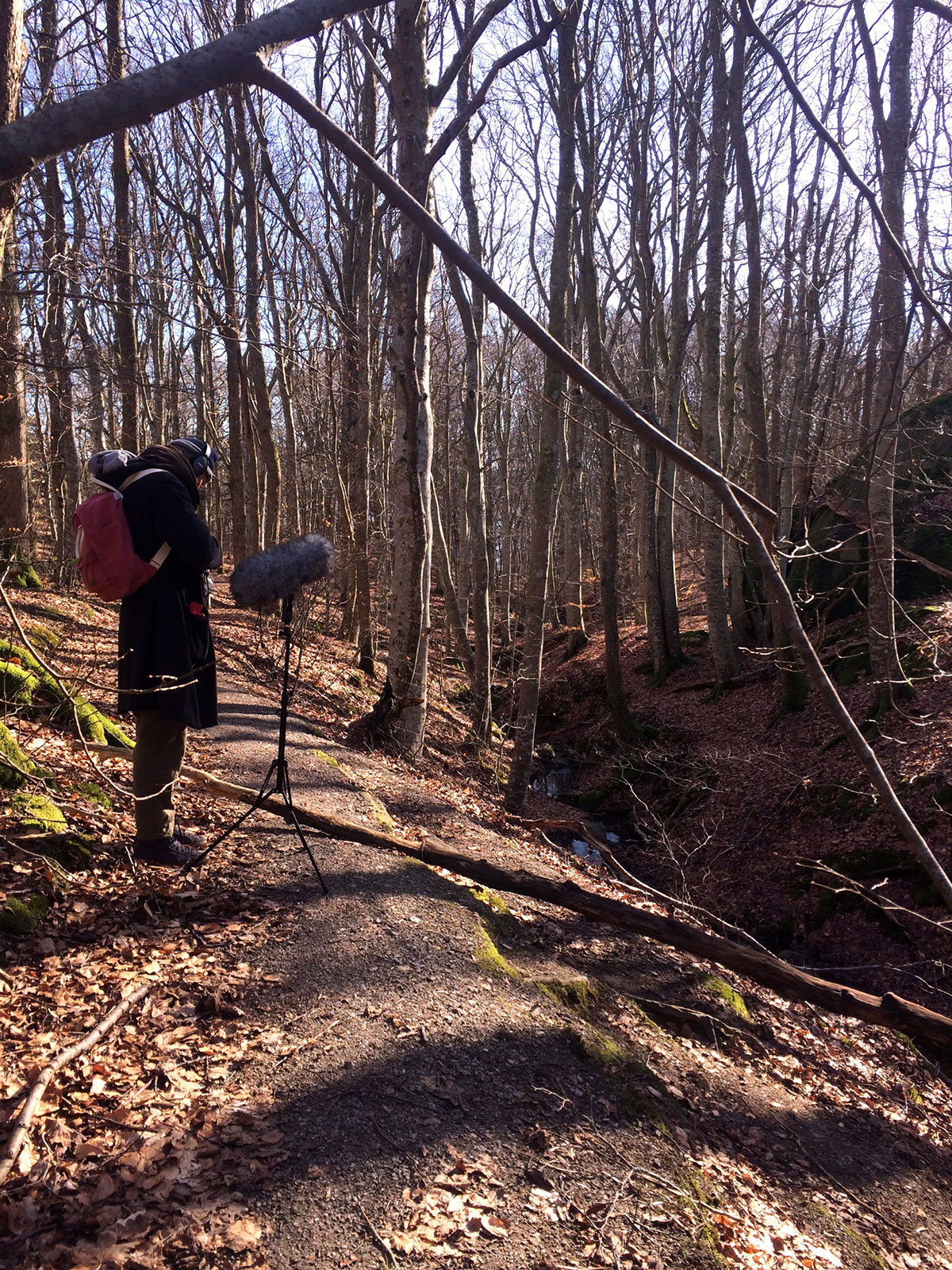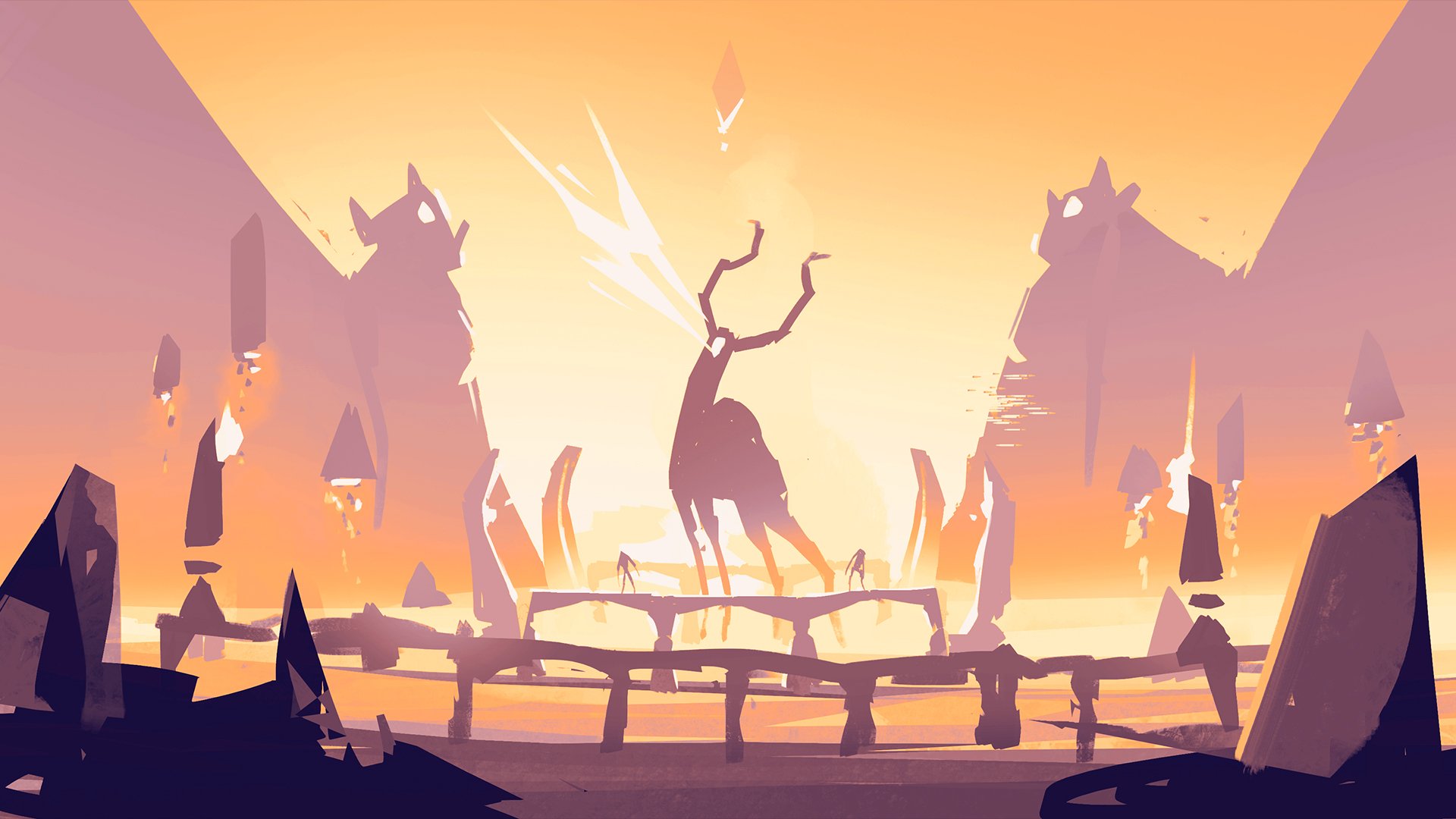Creating the sound of Fe
Fe’s composer and sound designer Joel Bille walks you through the technical aspects of creating the sound of nature.

Working with the sound of Fe has been a challenge in many ways. For starters, some of the game's core gameplay is centered around sound, and that comes with special challenges in itself. Also, it’s not entirely obvious how to sound design a low poly-style graphic. Should the audio match the visual style, and thus be stripped down? We actually ended up doing the opposite, letting the audio be complex and textured and fill out where the visuals ends. We wanted it to sound realistic – or at least realistic if the world were to look as it does in Fe.

With that in mind, let’s start with the sounds from our world. It's more difficult than you'd think to record ambiences without sounds from traffic or people in the background. The frogs and crickets heard in the game was actually recorded during a trip to an island outside of Thailand. Me and my fellow sound designer Oscar Rydelius went on a couple of field sessions, venturing deep into national reserves to get away from sound pollution from human activity. We even did one session out in the jungle at four am to catch the sound of nature without disturbing cars and people. The waterfalls were also recorded during this trip.
Most of the wind sounds were recorded during the winter on Skaftö, a small Swedish island in Bohuslän north of Gothenburg. It had to be in the winter – in the summer the birds would have made it impossible to get clean wind recordings. Some of the other insects were recorded on a hillside in Transylvania in Romania a few years back. Not all sounds are that romantic though, like the sounds of creaking trees that comes from a loose floorboard in my kitchen.
We had high ambitions with the ambience of the game from the beginning. We wanted the forest to feel lush and full of life, inhabited by its own flora and fauna. The atmospheric sounds can be a powerful tool to express this. But we agreed that we shouldn't work with references to real world animals, because we wanted the forest to feel magical somehow. None of the creatures in Fe are species found in the forests of our world, and it would be incoherent if you could hear sounds from animals that are. Also, bird sounds could confuse the player to think that there actually was a bird nearby in-game and expect to be able to interact with it. So that meant: no birds in the forest ambient sounds!

Then, how do you make the sound of a lush forest full of life, without birds? We ended up with a combination of sounds, gentle wind in trees, streams and waterfalls, creaking trees and sounds from the animals actually living in the forest. There are also lots of sounds of insects and frogs hidden in bushes, trees and ponds. We chose insects and frogs because they're sort of a part of the forest that you don't expect to be able to interact with, and won't be bothered by. They were used quite frequently to add texture and a sense of life to many areas. And actually, we ended up using some home made bird sounds in one area. These are made up from tweaked recordings of my own voice, and edited in a way so that they sound far off, and thus differentiates from the sounds from the actual in-game birds, but adds a bit to the sense of complexity and liveliness.
Singing is an important part of the experience, and the moments where you sing with animals needed to feel beautiful and serene, not to mention intuitive and understandable. At the same time the mechanic is musical at its core, and needs to work with the music of the game. We were inspired by the feeling of tuning a guitar, feeling how the vibrations close in and finally evens out when you get it just right.
So, when singing with an animal, there's a couple of sounds at play. First, it's the animals own voice. Then, when the player starts to sing, we add two violin tones with a tremolo effect, that flutters the volume up and down. As the player shifts their singing pitch and closes in on the right tone, we decrease the intensity of the tremolo, to even it out completely when on just the right tone. On top of that, there's a third violin playing the same tone as the player and animal is singing, to confirm even stronger that you got something right. The ”correct” pitch for each animal is a tone that in combination with the tremolo tones forms a major chord, in the key of the game music. You can imagine the puzzle that meant, with all the different animals with their unique voice range.

All in all the sound design of Fe has been a great project with lots of interesting challenges. I hope you’ll enjoy the work done by me and the rest of the team when Fe releases February 16th!
Joel Bille
Composer and sound designer
Joelbille.com
twitter.com/joelbulle

